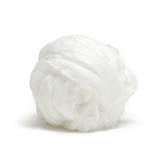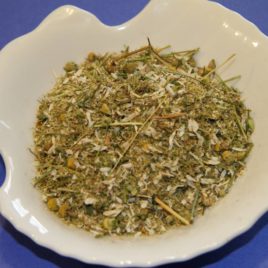Back to Natural Dyes
Cutch, Ground Extract
$4.40 – $18.00
Ground resin extract from Acacia catechu, sometimes called Catechu.
Use on protein or cellulose fibres. A source of lovely rich browns and rusts. Substantive but pre-mordanting recommended. Use at 20-50% WOF for medium shades.
TO USE: soak 24 hours in water to dissolve, stirring occasionally. Place extract and fibre in dyepot and add more water if necessary. Bring to a high simmer for 1 hour. Let fibre cool in dye liquor for at least one more hour or overnight.
Light and washfastness: excellent
Related products

Logwood, Extract
Dried and cured chips from a tropical tree, Haematoxylum campechianum.
Use on protein or cellulose fibres. Pre-mordanting essential. Produces dramatic pink, blue, maroon and purple to black shades. Use at 20-50% WOF for medium shades.
TO USE: place chips in a stocking and soak overnight in cold water. Bring to a simmer for 1 hour, cool and remove stocking. Enter premordanted fibre and simmer for 1 hour. Bath may be used for successive dips, and by the 3rd or 4th dip the colours being yielded change to golds, greens or browns.
Light and washfastness: average. Keep dyed fibres away from bright light.
NEW: Logwood Extract: this has already been soaked out then reduced down to a powder. It's expensive but very strong and super convenient. Simply weigh out the extract at around 10% weight of fibre for medium shades, or adjust for darker or lighter. Dissolve in a measuring cup with hot (but not boiling) water, add to your dyepot with water, mix well, add your fibre and simmer for an hour.

Indigo, Natural Ground
PLEASE NOTE: Indigo dyeing is an art and science that you need to research ahead of time. It is NOT handled like any of the other natural dyes, by simmering on the stove!!
Finely ground powder from Indigofera tinctoria.
Use on protein or cellulose fibres. A vat dye, Indigo must be handled in a special way in order for the complex chemical process to occur. It produces a gorgeous range of true blue shades, depending on how many dips are done and how much indigo is used in the vat. The indigo magic will not work with the standard methods used for other natural dyes.
TO USE: follow one of the many recipes for setting up an Indigo vat. The internet is a good search source. We stock some of the supplies needed, depending on the method. Thiourea dioxide and Soda Ash are the two most commonly used ingredients, which we stock. Lye is also used sometimes, and due to its caustic nature we will not stock it: any good hardware store sells lye in with the cleaning products. We highly recommend looking at the pdf tutorials on Indigo at www.maiwa.com
Light and washfastness: excellent.

Nylon – Fake Cashmere (Top)
100% Nylon.
Extremely clean combed top, possibly the whitest fibre we carry. Staple length is about 3 to 4 inches which makes this top-notch for blending with almost anything. Few would spin Nylon all by itself, but it has a great reputation for adding strength and durability to other fibres, especially when spinning yarns for socks. This is a fine grade that you won't even notice when blended in at a rate of 20 to 25% or so, by weight.
Surprisingly, Nylon dyes beautifully with acid dyes. It also takes natural dyes well using the usual premordant methods for protein fibres. We love the moniker of "Fake Cashmere", but your fingers will never confuse it from the real thing. It feels more like those puffs they stick inside pill bottles. Maybe it is.

Dyer’s Chamomile
Dried flower heads of Anthemis tinctoria, a perennial garden flower often called Golden Marquerite. This plant is NOT the same as the Chamomile used for tea.
Use on protein fibres. With an Alum/c.o.t. mordant this gives a strong yellow. Use at 50-100% WOF for medium to strong shades. Mixed with or dyed under/over Madder this will produce tangerine shades. A traditional dyeplant widely used in Turkish carpets. If you happen to grow the plant simply pick the flowerheads and use fresh, no need to dry them.
TO USE: soak in hot water overnight. Simmer 30-60 minutes in soaking liquid. Cool, strain then simmer premordanted fibre for 30-60 minutes.
Light and washfastness: good to excellent with a mordant.


